Like raccoons, palm civets are considered to be an alien species, but they also cause damage to crops such as orchards in hilly and mountainous areas. Various damages have been reported, such as staining the
In this article, we will explain the characteristics of palm civets and how to prevent damage.
Characteristics of palm civet
characteristics and ecology
If you write palm civet in kanji, it will be "white nose core". As its name suggests, it is characterized by a white line running from its head to its nose. This line can also be used to identify individuals.
In the past, palm civets were once thought to be a native species, but now the general idea is that they are an alien species that came from China or Southeast Asia.
In addition, since there is a record that it has inhabited Japan since the Edo period, it is legally treated as a native animal. Including the length of the tail, the adult animal is about 90 cm long and weighs about 2 to 5 kg, about the same size as a raccoon dog.
It is a typical nocturnal animal active from sunset to dawn. Since they do not have territories and have a calm personality, they do not fight with other individuals as much as raccoons, which have a rough temper, and coexist well with other animals such as raccoon dogs and badgers.
They live very quietly and are nocturnal, so there are many cases where they go unnoticed even if they live nearby. In some cases, even though they lived in the attic of a private house, they were not noticed by the residents, and it turned out that they had been living there for many years.
They prefer places with water, and often use rivers, irrigation canals, and ditches when moving.
Breeding and Growth/Lifespan
Civets can breed throughout the year. Females give birth once a year, and the number of civets of palm civets that they give birth to is about 2 to 3 at a time.
It takes about 10 months to reach adulthood. They grow slowly and have a long lifespan, and it is not uncommon for them to live over 20 years in captivity. In addition, as it grows, it may emit a peculiar unpleasant odor.
physical ability
What is worth mentioning is the ability to easily enter even narrow gaps. Even a gap with a diameter of about 10 cm can be easily passed through while rotating the body.They have five toes, and the front feet are smaller than the back feet. The center of the pad on the sole of the foot is dented like a human palm, and when you press something with the sole of your foot, it fits perfectly.
With this characteristic sole, you can easily climb even slippery things. For this reason, the places where palm civets invade an orchard are often the four corners where it is easy to climb with your feet.
It has a well-developed sense of balance and can walk deftly on thread-like scaffolding. It walks on high and difficult places without difficulty, and even hangs on its hind legs as a fulcrum to eat fruit.
food and favorites
Civets are omnivorous and will eat anything. Many damages to fruit trees have been reported, but they also eat vegetables, insects, and even chickens. As a member of the civet family, it likes fruits, especially sweet and soft foods (grapes, bananas, strawberries, etc.).
Those who grow fruit trees need to be especially careful, as they can invade vinyl greenhouses through very small gaps.
On the other hand, hard apples and unripe persimmons are not eaten at all, but they do not seem to like ripe and soft ones. In addition, there are many reports of damage to crops other than fruits, such as corn and tomatoes, which are high in sugar content.
They tend to move from place to place looking for their favorite prey. Therefore, while the number of individuals is small, the damage is small and the locations are scattered, so it is often not noticed that the damage is caused by palm civets.How to recognize damage caused by palm civets
Since the damaged crops are similar to those of raccoon dogs and crows, there are cases in which people take the wrong countermeasures without noticing damage caused by palm civets.
The damage caused by palm civets has the following characteristics, so let's check the situation firmly so that the countermeasures taken do not produce results.
・Damage occurs at night (damage is discovered early in the morning)
・The tip of the crop is bitten off, and the base remains
・It looks like it was eaten by a person, but there is no evidence that a person has entered it.
In particular, it is often mistaken for damage caused by crows and raccoons, but in the case of crows, it is a bite mark from diagonally above. Raccoons also use their forelimbs to grab food, leaving claw marks on crops.
The first step in countermeasures is to carefully observe characteristics such as food marks and identify the animals that cause damage.
About palm civet measures
As with any animal damage, it is important to take early measures before the damage becomes severe. As mentioned above, early stage civet damage tends to go unnoticed. In some cases, the number of individuals has increased without realizing it, and by the time the damage becomes visible, it has become too large.
The three pillars that are important as countermeasures are:
1. Eat less
2. Reduce roosting
3. Population management
Countermeasure 1: Eat less food
Even if you don't intend to do so, there are many cases where you are feeding civets without realizing it.
Abandoned crops, unharvested fruits, uncollected garbage, etc., may unwittingly feed the palm civets.
Let's check once again whether there is not only unharvested crops and garbage left unattended that can be food for palm civets.
Since palm civets are nocturnal, it is also important to follow local rules thoroughly, such as not putting out food waste at night. In addition, unless the purpose is to capture, there is a risk of spreading the damage intentionally, so it is necessary to spread the understanding within the area that it should be absolutely avoided.
Countermeasure 2: Reduce roosting
Civets love tight spaces such as attics and gaps between walls. They have multiple favorite points in their living sphere, and they live their lives while moving from place to place.
And the point to use as a roost is often near the feeding ground. Areas with high crop damage by palm civets are almost always near roosts. By reducing roosts near feeding grounds, it is possible to prevent palm civets from becoming established in the area.
In recent years, the increase in vacant houses has become a problem, but palm civets prefer unpopular wooden houses like this one. Also, shrines and temples with many gaps to enter, abandoned school buildings, etc. are suitable places.
For example, in the case of a house, there are many cases where the entry point is under the bay window or through the ventilation hole and climbs through a narrow gap to settle in the attic. Especially if the position of the bay window is low and there is a gap under the bay window, be careful.
There are many cases where nests are built in the insulation. Also, since they have a habit of pooping in certain places, there are cases where it is discovered that civets live in the ceiling by staining the ceiling with poop.
Try to reduce the number of roosting places as much as possible by consulting with a construction company to block entry routes, regularly patroling suspicious places, and even dismantling buildings in some cases.Countermeasure 3: Population control
Blindly managing the population will only cost money and effort and will not lead to results. Efficient management is important.
In the case of pest population control, it is basically done before the breeding season, but in the case of palm civets, they can breed all year round, so it is difficult to manage the population by focusing on the season. Therefore, it is good to know that medium- to long-term measures may be required.
About capture
In the case of palm civets, population management is based on "capture". This is a measure taken when the population has become too large or to prevent habitat expansion. First of all, you need a hunting license to catch palm civets.
In addition, it is necessary to register as a hunter with the prefecture in which you plan to hunt. In addition to hunting, there is a method of "capturing harmful birds and animals", so it is a good idea to inquire with the wildlife department of each local government when capturing.
Reference article: The first step to catching pests ~ Necessary licenses and permits
About capture
When catching, in most cases "box traps" are used. Inexpensive box traps may have warped wire mesh joints or broken fasteners, so choose strong and well-made traps . Bait is placed inside the trap to attract it, and when the trigger is activated, the entrance closes and the capture is complete.Trigger mechanism of civet box trap
In the case of box traps for small animals such as civets and raccoons, the entrance closes when the hook is pulled to eat the bait, and the entrance closes when the footboard on the bottom is stepped on to eat the bait. There is a "kicking thread type" that closes the entrance by touching the thread (kicking thread) stretched inside.
In the case of the footboard type, the position and size of the footboard, the weight of the trigger activation load, etc. vary, and depending on the product, there are cases where only the food is taken and the trigger does not work. In such a case, try adjusting the position and weight of the footboard to increase the capture efficiency.
*Be sure to wear gloves when handling trapping tools and captured individuals to prevent injury and health hazards caused by bacteria.
About food and location
Various types of civet bait are used for box traps, but it is best to use mainly bananas and try various combinations. Sweet treats (cream, anko, etc.) and snacks may also be used.
Animal foods such as chicken or fish sausage may also be effective. What you have to be careful about is that domestic cats, etc. are caught by mistake. It is necessary to pay close attention to animals that may be accidentally captured by patrolling the set traps every day.
Damaged fields should not be chosen as installation sites. Even if you place a box trap in a field where attractive bait is unprotected, it will only be warned and ignored. It is effective to install it in a place that is a path for palm civets, such as animal trails and fences that are a little away from damaged fields, waterways and gutters.
Also, instead of setting it in the middle of the road, choose a flat area that is slightly off. Place bait if the individual does not approach the trap. Gradually lure the animal into the trap by placing bait in spots from the animal's path to the entrance of the trap.
About processing after capture
If you want to exterminate them yourself, please let them die without causing pain as much as possible based on the Wildlife Protection Law. Details are stipulated in each prefecture's wildlife protection plan and municipal alien species control plan, so be sure to check the details with each local government in advance.
Corpses are generally incinerated, or otherwise buried. In both cases, please pay attention to public health, such as preventing bad odors and pests, and when burying them, be careful not to dig them up by wild animals living in the surrounding area.
Civet civet measures are often implemented together with raccoon measures. Please refer to the following articles for countermeasures against raccoons.
Reference article: Raccoon ecology, countermeasures, and extermination

 箱罠
箱罠
 くくり罠
くくり罠
 パーツ類
パーツ類
 電気柵
電気柵
 自作キット
自作キット
 防獣グッズ
防獣グッズ
 監視カメラ
監視カメラ

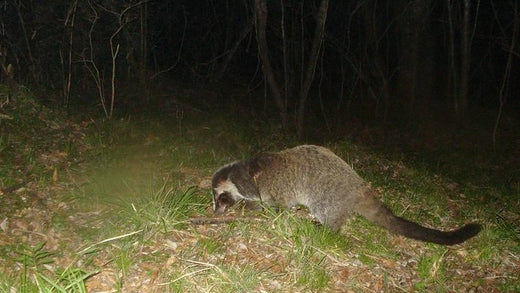


![Fare Asahi Shiki Small Animal Box Trap Small Size [Single Door]](http://inohoi.jp/cdn/shop/files/asahi-small02_071bc964-fa6b-4587-ae52-d15e905cc2c7_300x300_crop_center.progressive.png.jpg?v=1727766085)
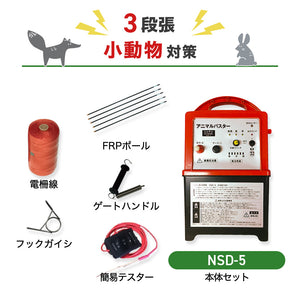
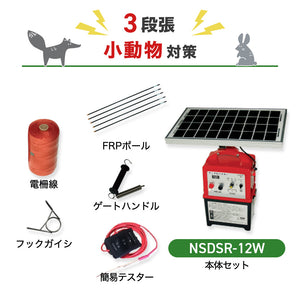
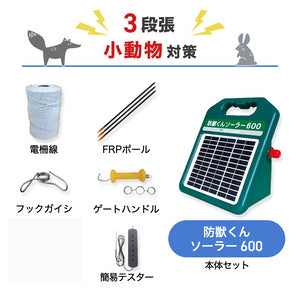
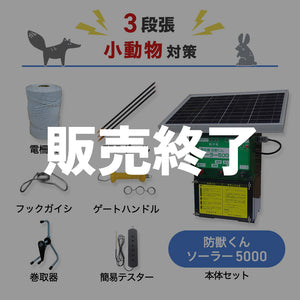

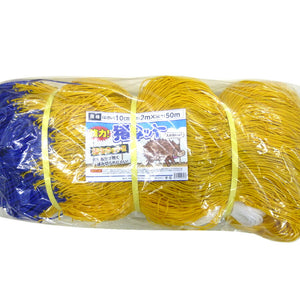
![Folding type box trap [single door]](http://inohoi.jp/cdn/shop/products/main_300x300_crop_center.progressive.jpg?v=1625808867)



 box trap
box trap
 tying trap
tying trap
 enclosure trap
enclosure trap
 Prevention and avoidance goods
Prevention and avoidance goods
 electric fence
electric fence
 trap surveillance camera
trap surveillance camera
 transportation goods
transportation goods
 Trap detection sensor
Trap detection sensor
 hunting supplies
hunting supplies
 hunting books
hunting books
 Anti-bird goods
Anti-bird goods
 Agricultural materials/machinery
Agricultural materials/machinery
 boar
boar
 deer
deer
 Kyon
Kyon
 monkey
monkey
 raccoon
raccoon
 Badger
Badger
 palm civet
palm civet
 raccoon dog
raccoon dog
 nutria
nutria
 mouse or rat
mouse or rat
 Mole
Mole
 bear
bear
 pigeon
pigeon
 Crow
Crow







